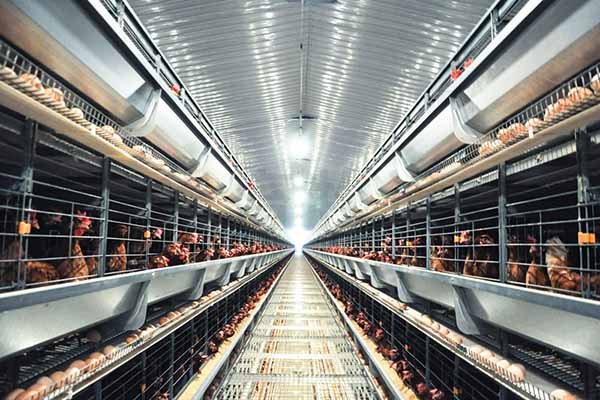Maximizing Efficiency at Uganda Chicken Farms with Automated Feed Storage Equipment
Time : 2025-07-02
Uganda, with its vast agricultural land and burgeoning poultry industry, is seeing an increasing demand for high-efficiency solutions to meet the rising demands of its growing chicken farms. One of the key elements in a successful poultry business is an efficient feed storage system. This article explores the benefits and considerations of integrating automated feed storage equipment in Ugandan chicken farms.
—
The Evolution of Feed Storage Systems
Feed storage systems have evolved significantly over the years, from simple grain bins to sophisticated automated storage systems. Today’s automated feed storage equipment is designed to offer precision, safety, and convenience to poultry farmers. By automating the feed storage process, Ugandan chicken farmers can optimize their operations, minimize waste, and reduce labor costs.
—
Understanding Automated Feed Storage Equipment
Automated feed storage equipment is a complex system that typically consists of the following components:
– Feed Silos: Large, cylindrical storage tanks that can hold significant quantities of feed. They are designed with aeration systems to prevent spoilage.
– Feeding Systems: Systems that deliver feed from the silos to the poultry house. These can include conveyors, augers, and feed distributors.
– Control Systems: Software programs that manage the feed storage and distribution processes. These systems can be remotely monitored and controlled via smartphones or computers.
—
The Benefits of Automated Feed Storage Equipment
1. Cost Savings
– Automated systems can significantly reduce feed losses due to waste and spillage. By precisely controlling the amount of feed distributed, farmers can minimize losses and save on costs.
– Reducing manual labor also results in savings on wages and labor-related benefits.
2. Increased Feed Freshness
– Automated storage systems prevent spoilage by keeping feed dry, cool, and free from insects and rodents. This ensures that the feed remains fresh and maintains its nutritional value.
3. Improved Animal Health
– By providing consistent and high-quality feed, automated systems can lead to better overall health and productivity of the chickens. This includes increased egg production, faster growth rates, and improved meat quality.
4. Streamlined Operations
– The automated system eliminates the need for manual feed handling, saving time and effort for farmers. The process can be set to run 24/7, providing uninterrupted feeding.
5. Scalability
– Automated systems are easily scalable, making them suitable for farms of all sizes. As the farm grows, the system can be expanded to meet increased demands.
—
Considerations for Integrating Automated Feed Storage Equipment
While the benefits are clear, there are several factors that need to be considered when integrating automated feed storage equipment:
– Initial Investment: The cost of purchasing and installing an automated feed storage system can be substantial. However, when weighed against the long-term savings, the investment can prove to be worthwhile.
– Space and Layout: The layout of the chicken farm must accommodate the new equipment. Proper space for installation and regular maintenance should be factored into the planning.
– Training and Maintenance: Farm employees will need training on how to use and maintain the system. Regular maintenance is essential to ensure that the system continues to function efficiently.
– Energy Consumption: Automated systems may require a significant amount of electricity, which should be factored into the overall operational costs.
—
Implementing Automated Feed Storage Equipment in Uganda
To implement an automated feed storage system in Uganda, poultry farmers should:
1. Assess their needs: Understand the current feed storage and handling processes, as well as future requirements.
2. Choose the right equipment: Select a system that fits the size of the farm and meets its specific needs.
3. Seek professional advice: Consult with poultry industry experts to ensure that the chosen system is suitable for the farm’s unique requirements.
4. Plan for installation and training: Coordinate with professionals for the installation and ensure that all staff members receive proper training.
5. Monitor performance: Regularly monitor the system’s performance to ensure that it continues to function optimally.
—
Conclusion
Integrating automated feed storage equipment in Uganda chicken farms offers numerous benefits, including cost savings, increased feed freshness, improved animal health, streamlined operations, and scalability. However, it’s important to carefully assess the initial investment, space requirements, training needs, and energy consumption when considering this technological upgrade. By making informed decisions and working with experts, poultry farmers in Uganda can take a significant step towards achieving higher efficiency and profitability in their operations.












